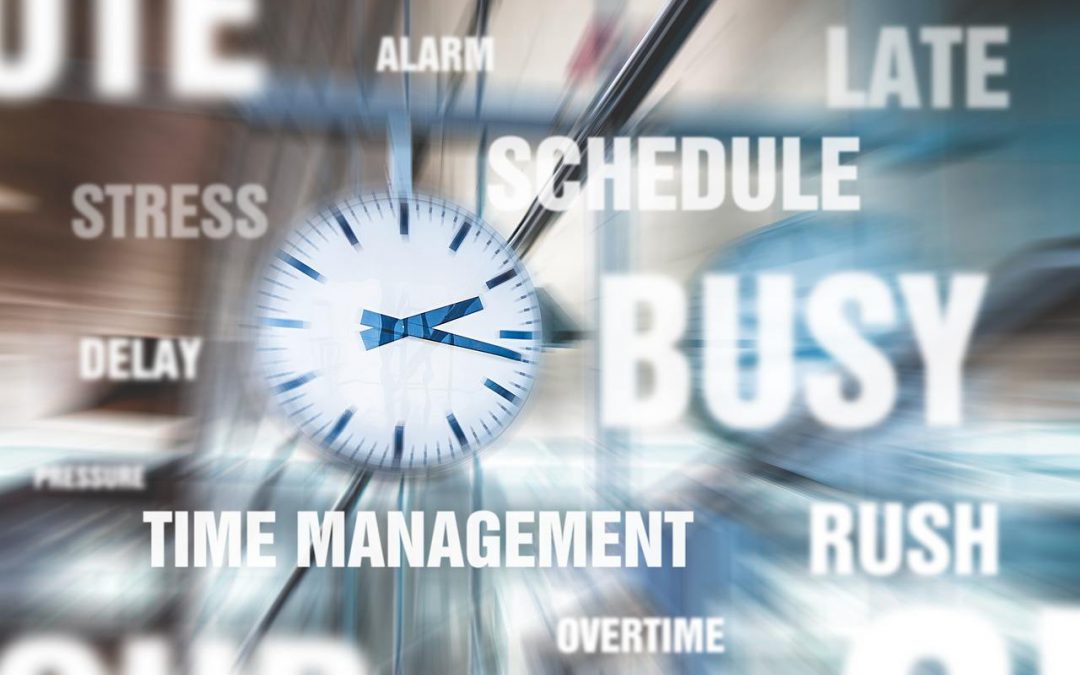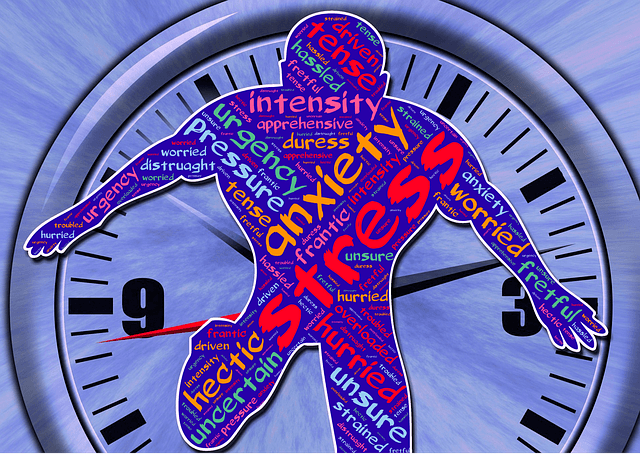
by Maureen Cooper | Jul 29, 2017 | Compassion, Kindness, Meditation, Mindfulness, Relationships, Yourself
A few weeks ago, my partner and I were out with some friends for dinner. We had not seen them for a while and we had a lot to talk about. On top of that, one of the friends was going through a bit of a tough time and needed support—which we happy to give, except that the people at the table behind us were celebrating and extremely noisy. It was one of those weird situations where you found yourself raising your voice to talk about delicate things. I found myself beginning to experience what I can only describe as ‘restaurant rage’.
I was focused on our small group at our table and found myself glancing over my shoulder in increasing irritation at the thoughtlessness of the noisy crowd behind me. It seemed to be that they were inconsiderate and thoughtless, with no care for the enjoyment of the other diners.
Eventually, after a while, a sense of doubt set in. How was my behaviour any different? I wanted things quiet and peaceful so my friends and I could have the environment we wanted. The celebrators wanted to have a good time. I wanted things one way and they wanted them another. Why did I assume that my way was best? Why did I feel entitled to it?
It got me thinking about how our default position is so often to want others to change to fit in with how we want things to be. It is so much harder to change our own behaviour to be able to manage the challenging situation more effectively.
What follows are my ideas about how to manage a situation like this next time it comes up. I live in a city; noisy restaurants are common—so turning restaurant rage into kindness seems like a good investment.
Take care of your irritation
If you are going to change the way you are reacting you need to give yourself some time to realise you are irritated and then to calm down. I usually find a few long, slow breaths will do it. No-one needs to notice—you can just rest your attention on your breath for a few moments until you feel yourself coming back.
The next thing is to get a handle on what is actually happening, rather than what you imagine is happening. In my dinner example, the party at the nearby table were not nasty people on a mission to spoil my evening—there just wanted to enjoy themselves.
With this perspective, it’s easier to remember that it’s not all about you. You have the right to want things to go the way you wish but then so does everyone else. Sometimes things go your way, sometimes they go another person’s way. There’s not a lot we can do to change that and getting irritated about it just makes you miserable.
Pay attention to the sound without the storyline
It’s possible to use sound as a support for meditation. Of course, if you are in a restaurant you might not want to go off into a corner for a meditation session but you can still use the principle. Just notice the sounds around you, without judging and without building a storyline about them. You could call it a Teflon relation to sound—just notice it with your full attention but without commentary. Going back again to my restaurant example—I immediately made a story about my friend and I needing quiet and the people nearby ruining it with their noise. Thinking back, it’s quite likely they were not even particularly aware of us.
We relate to the world through our senses but we do have a choice as to how we are with the information they provide. We don’t always have to react.
If you find it hard to make meditation a regular part of your life, remember that yoga can also help you to find some inner peace. Yoga is a way to relax, unwind, and become one with everything around you. It can help you to develop resilience in the same way that meditation can.
Enjoy other people’s pleasure
When you get annoyed with the behaviour of other people your stress levels rise and you feel uncomfortable. In the restaurant, I could feel myself getting tight with trying to block out the noisy table.
A totally different approach is to notice joy when it is happening around you and to allow it to nourish you.
This might involve dropping your own agenda and simply opening to the enjoyment of others. It could mean that instead of protecting yourself, you allow yourself to open to the happiness of other people. It does not have to be your happiness but it can lift your heart just the same.
Always wish them well
The last of these remedies for restaurant rage is wishing people wellbeing and happiness. You may have heard of Loving Kindness Meditation. It’s a meditation focused on wishing happiness and wellbeing for yourself, for people close to you, for people you do not know so well and even for people you find challenging.
Even if you are not familiar with the whole meditation, you can still focus on a person, or group of people and in your mind, say something like, May you be happy, may you be well. I find it a great exercise to do when I am in crowded places and there are many people. It brings me a feeling of ease.
Do you have any tips for turning rage into kindness in city life? If you do please add them in the comments section.

by Maureen Cooper | May 23, 2017 | Kindness, Mindfulness, Relationships, Work
Most of us need to go to work everyday. We don’t choose who we work with, we have limited control over what we have to do and we’ll get feedback whether we want it or not. It’s a sure thing that we are going to feel frustrated at work from time to time—the question is, how much, and for how long?
Recently I stayed with my sister and her partner who both work full-time (and then some) in high pressure jobs. The first night I was there they got home from work at around 20.00, having left at 08.30 that morning. As soon as they came in the door a few things were very clear—they were exhausted, they were tetchy, they were happy to be home but they were already thinking that in a few hours they would be off again and in the meantime, there were loads of things to see to.
As we ate dinner together and they shared their day I got to hear some of the stories of what they had been dealing with. They included a chronically unsupportive boss, a difficult team member, a week schedule that was handed down rather than negotiated and underlying it all, the relentless busyness and pressure.
This scenario is played out in countless homes every day. When faced with this degree of frustration at work what can we do to manage it?
Here is a list of 8 things that I think could help.
-
Start with yourself
It’s all too easy to forget to take care of yourself when you’re very busy but that’s a shame because the more tired and frazzled you get, the easier it is to let the frustration pile up.
Here’s some quick, simple ways to look after yourself:
- check your breathing—are you breathing fully and deeply?
- find a moment to be alone—even in the loo
- take your break with congenial people
- have a plant at your work-station
- take a look at the sky from time to time
- get a few moments of fresh air
- have a family photo nearby
- make sure you are moving regularly—stretching, walking between activities
- drink water
-
Take STOP Moments
STOP Moments are what I call very short moments of meditation.
This is all you have to do:
Bring your attention home to your body and consciously relax
Check in with your mood and notice any tension
Take a deep breath
Rest your attention on your breath for at least 5 full breaths
Continue to your next activity.
You can spend an extra moment in the washroom and take a STOP Moment.
While you are waiting for a meeting to start, or before (or after) you take a phone call are other good times.
-
Don’t let yourself be pin a cushion
What is the function of a pin cushion? It’s a place where you stick all your pins so they don’t get caught up in everything else and prick you. One of my sister’s team members is quite depressed and that makes him reactive and over-anxious. This means that he gives out a lot to other members of the team. As his manager, my sister is trying to absorb his negativity to protect other members of her team – most of whom are giving him a wide berth. It is exhausting her. She feels like a pin cushion stuck full of pins.
Here’s an exercise she could try to deflect those pins pricks.
Imagine a dark cloud around the person who is hitting out at you
As you breath in, take all the murky cloud into yourself
As you breath out, breath out healing and ease towards the person
You could visualize this as rays of bright light that surround the person, filling them with wellbeing.
Repeat this several times during the day—especially after a difficult encounter.
This exercise works like air conditioning—taking in hot, stuffy air and sending back fresh cool air.
-
Try giving the benefit of the doubt
In listening to my sister and her partner I was struck by how hard the environment is in which they work. Criticism and attack seem to be standard fall-back strategies. Feeling rejected, disrespected and overlooked at work all have a strongly negative effect on our performance. Building connection and a healthy sense of belonging are more conducive to giving our best at work. Rarely are we in a position to change a total work culture but we can take steps to manage our own response to it.
Giving people the benefit of the doubt whenever possible is a good way to soften the impact of a harsh environment. When we are generous with our work colleagues we feel better ourselves. Our own stress response is eased and we enjoy the good feeling of allowing space for other people around us.
-
Avoid porcupines
How many porcupines do you have in your workplace? You know the kind of person—one who is always on the look out for any sign of criticism, always ready to hit back when things don’t go their way. They seem to draw energy from a good scrap.
My brother-in-law has a boss who is a bit like that and he finds it very frustrating. His strategy is to avoid him as much as possible and to choose his battles skilfully. He plans carefully for the occasions when he needs to tackle his boss about an issue and documents the interaction, so there can be no future misunderstanding. It’s extra work and it means that he cannot count on his boss as he would like to but it is helping to minimize nasty exchanges.
-
Hold the bigger picture
It is so important to remember why you are doing what you are doing. Although my sister and her partner find work extremely demanding, they are both driven by a sense of purpose in what they do and it helps them find the courage to deal with the aspects that are so challenging. The bigger picture of their work is a source of inspiration for them.
At a recent workshop that I held on stress in the workplace, one participant shared that he actively hated the product that he was selling. He was not indifferent—he actually used the word, ‘hate’. It’s going to be hard for him to be able to work on his stress in a sustainable way if there is not a coherent bigger picture of what he doing that holds meaning for him.
-
Be the calm at the centre of the storm
One of the most effective ways to work with frustration for me is to invest a lot of effort into maintaining my own sense of calm when everything else feels difficult. I work on not letting the challenges define me and how I am feeling. If you are a meditator, then you already have an excellent way to help with this. For those people who do not meditate so much, then try visualizing a place of space and calm in your heart—like a small sky. Then imagine that all the challenges that you are facing dissolve as they encounter this quiet place—just like weather splashing across the sky but not damaging it.
-
Leave it at the door
When it is time to leave work, start the process of letting go of the worries and frustrations of the day. You are not going to be able to do anything about them until tomorrow, so it is a shame to take them home with you. Use the journey home to process the day and prepare for your evening. If it helps, have a simple ritual when you arrive home—like taking off your shoes at the door—which symbolizes for you that you are putting aside the difficulties of the day and turning your attention to your own personal time.

If you found this post helpful, you could look into my recent online course,
Nine Ways to Cope Better with Your Work Frustration
You can check it out here

by Maureen Cooper | Mar 13, 2017 | Kindness, Relationships, Self-compassion
We all want to be happy
A few years ago, I had to attend an outpatient clinic in one of Amsterdam’s big teaching hospitals. My treatment lasted several weeks and involved me making frequent trips. Naturally enough, after a while I began to see other people making the same journey. Something that struck me very strongly was that the was a big variety of people all going through a similar experience—different ages, backgrounds, ethnicity, occupation were just a few. Yet all them had an important element in common—the wish to be well and a feeling of vulnerability because they were not sure how their treatment was going to turn out. On top of that, most people came with a friend, or partner, or relative and the love and care between them was palpable—the carers so wanted everything to work out well for the people they were caring for.
As human beings, we all want to be happy and not to have to deal with pain and suffering and yet, pain and suffering are an inevitable part of life. My hospital experience demonstrated that for me profoundly but it also showed me the tenderness and courage that underlies that truth. As just one patient going through the motions of treatment, along with all these people who started out as strangers to me, I felt the raw material of myself as a human being. Maybe my interests, and life experiences were different but that was of no consequence. My hopes and fears were pretty much the same as everyone else’s who were there with me. There was a shared appreciation that while we were all going through our individual treatment, we were in this together. Somewhere each of us was touched by the depth of interconnectedness that unites us in common humanity.
A way to look at self-compassion
In her book, Self-Compassion, Kristen Neff describes what she calls the three elements of self-compassion. These are self–kindness as an antidote to self-judgment; common humanity as an antidote to isolation and mindfulness as an antidote to over-identification. My blog, How to be a Good Friend to Yourself, discusses the first element and I will cover the third element in my next blog. Let’s look now at our tendency for self-isolation.
Why do we tend to hide away when we feel bad?
Think of times when you behave in a way that you are not happy with—you lose your temper, or you’re impatient with a waiter in a restaurant. Do you feel yourself shrink a little? There’s a sense of disappointment and perhaps some shame. What about when you find yourself skipping the gym for the third week running, or not ringing your friend who just broke up with their partner because you don’t have the energy to comfort them again? Then there are the tricks that life can play on us—we get made redundant, or our children leave home and we don’t know how to fill the gap. Events like this that make us feel less good about ourselves can lead to us wanting to shut ourselves away from other people. We don’t feel good enough and we are worried that other people will find us inadequate too. Our fear is that if we are not managing to be up to the mark, then other people will not want to be with us, let alone love us. Much better to hide away before we feel rejected.
Self-isolation is contrary to how life it
When we isolate ourselves, we are cutting ourselves off from the nourishment and support of people, who, although we don’t realize it at the time, are just like us. Compassion is about understanding that everyone suffers and that suffering is part of life. When we can open ourselves to the reality of this, we find that we stop shrinking. Instead of being locked into a sense of our own failings we can see them in relation to the failings of others. Did you ever meet a perfect human being? My guess would be no—and yet we continuously expect ourselves to be perfect! There can be a big relief in dropping this pretence and accepting ourselves as a flawed human being, who is doing their best along with everyone else. Self-compassion is relational. It involves understanding that we have disappointments and inadequacies, while finding the courage to address them.
What Mirror Neurons tell us about interconnectedness
Mirror neurons were discovered by Italian researchers in the 1990s. Before this discovery, it was thought that the brain uses logical thought processes to interpret and predict other people’s actions. However, mirror neurons seem to enable us to simulate not only other people’s actions but also the intentions and emotions behind those actions. It’s just like when you see someone cut their finger and you automatically wince in sympathy. It also seems that mirror neurons have a role to play in interpreting facial expressions and hand gestures. They point to a continuous subtle level of communication that is going on between our own brain and the brains of people around us. Vittorio Gallese, MD, PhD, one of the researchers involved in the original research in the University of Palma comments, It seems we’re wired to see other people as similar to us, rather than different. At the root, as humans we identify the person we’re facing as someone like ourselves.
This points to a neurological basis for common humanity and appreciating the power of interconnectedness. Knowing the science can help develop our confidence in common humanity but it is opening our hearts to the experience of it that will help us to make it part of our lives.
A simple way to see how interconnected we are
When we wake up in the morning and start our routine we are usually focused on getting ready for our day and all the things we need to do. Tomorrow morning why not try something different—think about how interconnected we all are. As you shower and dress take a moment to check the labels in your clothes. The chances are that many of them come from countries other than the one you are living in. How many people would have been involved in making these clothes and getting them to you? We can start by thinking of the people who made the clothes but to make them they would have needed the raw materials and so there is a whole mass of people involved in all the processes of making the fabrics. Then there is design and marketing and transport and advertising and selling! It’s probably fair to say that there are thousands of people who contributed to the clothes that we are putting on. Through their efforts, they touch our lives.

by Maureen Cooper | Feb 23, 2017 | Relationships, Self-compassion, Yourself
Perfectionism at an early age
When I was in Junior School—quite some time ago now—I took part in a school Nativity Play. Wanting to do something a bit different the school included a Social Worker in the play to check in on why the pregnant mother and her husband were contemplating giving birth in a stable. The Social Worker was kindly but bossy—perfectly turned-out and very sure of her own place in the scheme of things. While my friends got to dress up as angels and donkeys and shepherds, I got to put on my best coat and scarf and play the role of the Social Worker, a real Goodie Two Shoes. Over the years my parents used to talk about what a good Social Worker I made and embarrassed me and several hopeful boyfriends with the inevitable photos. What they did not discuss was that even then I was influenced by perfectionism.
The perfectionist expectations of parents
Over the years I have sometimes thought of that Social Worker with a mixture of reluctant affection and some exasperation. The thought, ‘If only she had known then ….’ comes to my mind. My parents did not push me unduly as I was growing up but they certainly instilled in me the importance of having standards, of being well-organized, of doing well and not falling into bad habits. Of course, as soon as I left home and set out on my own I did my best to do all of those things just in order to check out how it worked away from the parental gaze. It took me years to come to any idea of who I was. I was caught in a struggle to be free and independent but at the same time full of fear. What if my freedom could only be bought by dropping those standards I had had instilled in me? I remember during one of my university terms I made the decision to be untidy because tidiness was so rigid. For about 6 weeks I lived in semi-squalor until a friend asked me what I was doing and the whole experiment appeared ridiculous!
Perfectionism as the wish for love
Perfectionism comes in many forms but it is always to do with the wish for love and acceptance. I wanted my parents’ love because I was not sure how to make send of the world without it. They seemed to make their love conditional on me having a certain set of standards and achieving a certain way of living. Part of my growing up was to find the courage to challenge this, which I did in fits and starts. We influence each other in so many ways that can be subtle and almost invisible but take years to unravel. If only my parents had been able to bring me up to understand that life is messy, that mistakes are inevitable but rarely fatal and that we can aim to be the best of ourselves without punishing ourselves along the way. Instead, probably scared themselves and wanting the best for their daughters, they created an ideal world in which if you behaved well and responsibly then everything would fall into place. Of course, the truth is radically different.
Habitual perfectionism
It’s easy to dismiss the idea of perfectionism by only seeing it as extreme behaviour—like constantly redoing a task that is already accomplished in order to ‘get it right’. Yet if we look closely, many of us are afraid of making mistakes, of being judged by others, of showing our true selves. Why do we do this? Because we want to appear in control, at the top of our game, and worthy of love. For me, it was such a relief to realize that perfection is an unattainable goal and trying to pursue it is like drinking salt water—the more you go for it, the more miserable you feel. Once I began to meditate it became clear that life is a practice and that means getting it wrong and making mis-steps but that is fine. It’s all part of the journey and the learning.
How does meditation help?
When we meditate our minds settle and calm down. This makes it much easier to see clearly what is going on with us and our world because a lot of the usual interference is not there. Meditation is about learning to be present and aware without judgement and wanting things to be different. This helps us to cope with the fear of what might happen in the future, and to let go of hurt that has happened in the past—our attention is more focused on what is actually happening in the moment. These moments change constantly, so it’s easier to connect with the idea process of life—its messiness and its surprises. The idea of control is exposed as hollow-how can you control a continuous river of experience?
In meditation we get to see ourselves close up—the torrent of thoughts and emotions that pass through our minds constantly. It is a process of coming to know yourself, to understand how your mind works and as you do that it seems less scary to allow yourself to be seen for who you are. You have had first-hand experience of your own imperfections and realized that it is fine. There is less reason to defend ourselves and to hide away. Yet at the same time, we connect with our soft spot—that place at our core where we can simply be with all our vulnerability, love and courage.
Brené Brown talks about perfectionism as a twenty ton shield that we think will protect us from being hurt but actually prevents us from being seen. Meditation helps us to remove the shield and helps us develop the courage to be vulnerable. If we can be vulnerable to our own pain and anxiety we have a chance of working with it, of moving through it. If we hide it away and pretend it’s not there it just blocks us.
Remember avoiding the traps of perfectionism is a process
One of the most insidious traps of perfectionism is when we apply it to the very means we are trying to use to help us avoid them. Often people that I talk to about learning meditation set themselves incredibly high goals, which inevitably they can’t keep up. This makes them feel discouraged and worries them that they are not doing it properly—that they are the only people who find meditation challenging. Sometimes this can even mean that they stop trying and feel meditation is not for them. This is such a pity and absolutely not necessary. The wonderful thing about meditation is that there is not such thing as a bad meditation and there are no standards to live up to. It is simply a process of coming to know your own mind, to make friends with yourself as you are and share that knowledge with courage and confidence.
If my young Social Worker had been taught to be with herself in this way, she might have had more of a sense of humour about the inadequacy of the stable’s facilities for child birth. She might even have been able to see the main point in the story—that something exceptional and magical was happening that was much more important than the irregularities that occupied her.

If you found this post useful you could check out my online course, How to be a Good Friend to Yourself
You can check it out here








